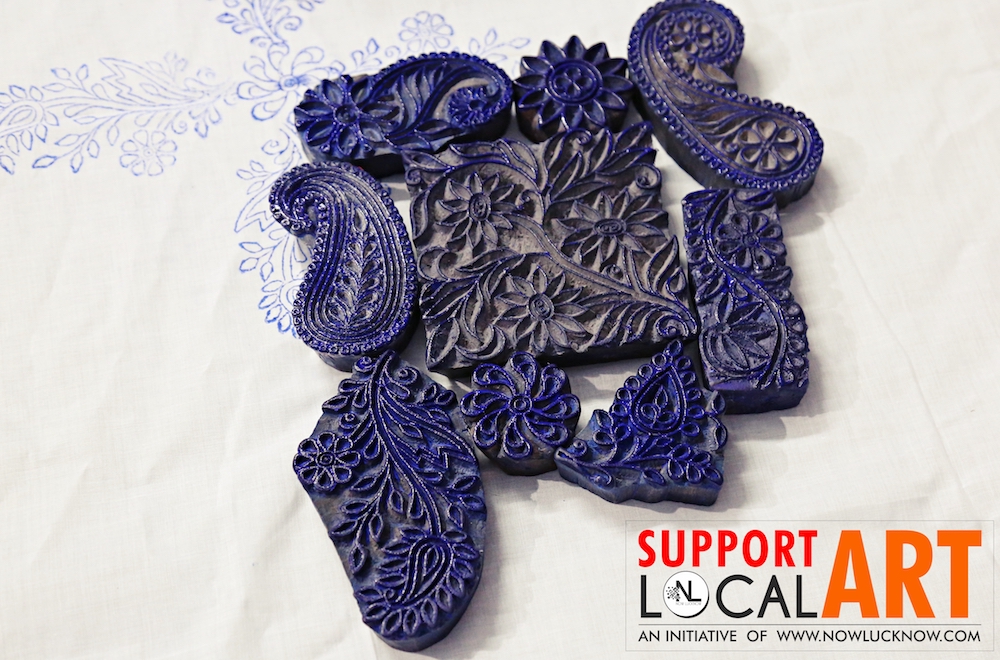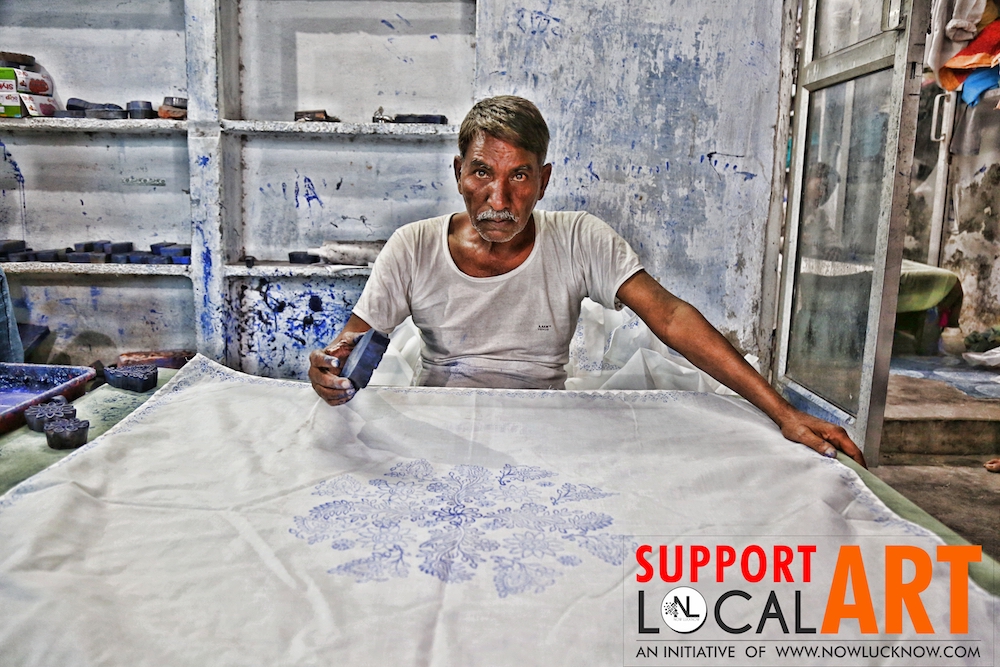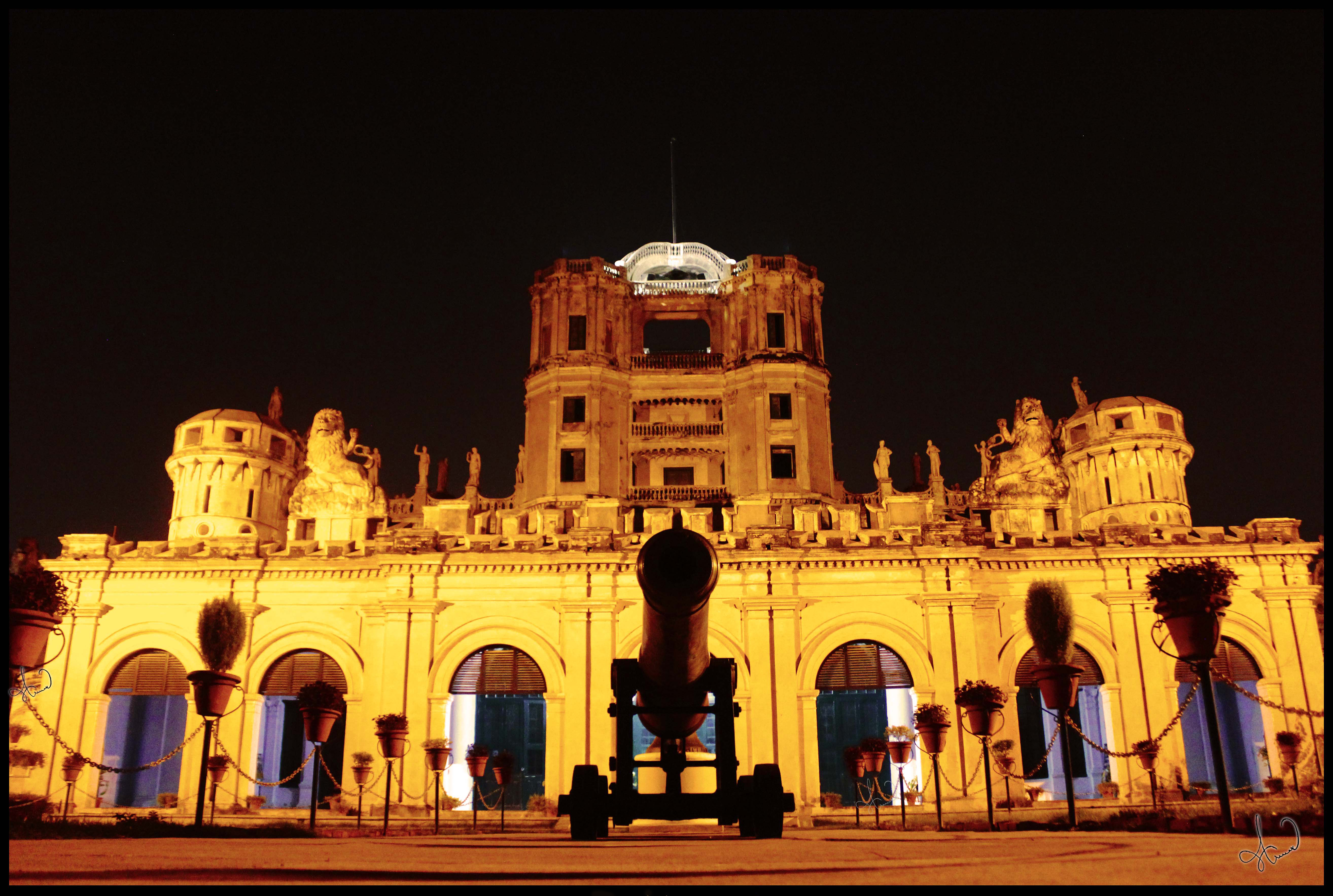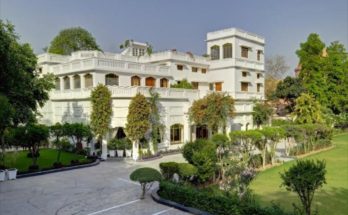We all take much pride in the indigenous art of Chikankari that has become synonymous with the city of Lucknow, but do we know what really goes behind the making of these beautiful, hand – crafted pieces? While we marvel at the talent of the craftsmen who carry out the embroidery, the art of block printing the chikankari motifs onto the garment is also an art that requires precision and skill.
CARVING THE BLOCKS

Blocks made of rose wood or sheesham are intricately carved with motifs as per the design requirements. Sheesham wood is used for the blocks, as it is strong and durable and easier to engrave than other woods. After the design is carved, the insides of the design grooves are smoothened out and chiseled to perfection. intricately carved wooden blocks in itself are just so gorgeous to look at, with the blue paint on them, bringing out each little nuance of the block to life.
The motifs can either be natural motifs like the popular mango design, palm leaves, grass stalks and floral patterns or geometric shapes like diamond, squares etc. or abstract designs. When a garment comes to the workshop for block printing, the design that needs to go on the garment is also sent. If the design is different from what is present on the block, then the required motif is engraved afresh on a new block.
PRINTING

The wooden blocks are then dipped into a temporary natural blue dye and then stamped lightly on the garment, almost in a rhythmic motion. These artists are usually given daily targets that go into hundreds, depending on the size of the garment.
There are around 40 – 50 karkhanas or workshops in the areas of Chowk and Husainabad in Lucknow where chhapai is carried out. But the sad truth is that with meager earnings, many owners are now looking at other means of livelihood. For stamping an entire sari, for example, the chhapai wala or thappa walagets a meagre sum of Rs. 7 and for kurtas, it is hardly Rs. 3.
When speaking to NL, one of the artisans mentioned, “As long as there is poverty in the state, the art of chikankari will continue”. He also went on to mention how he wished he wasn’t born into a family of karigars and that he would deter his son from taking this up.



